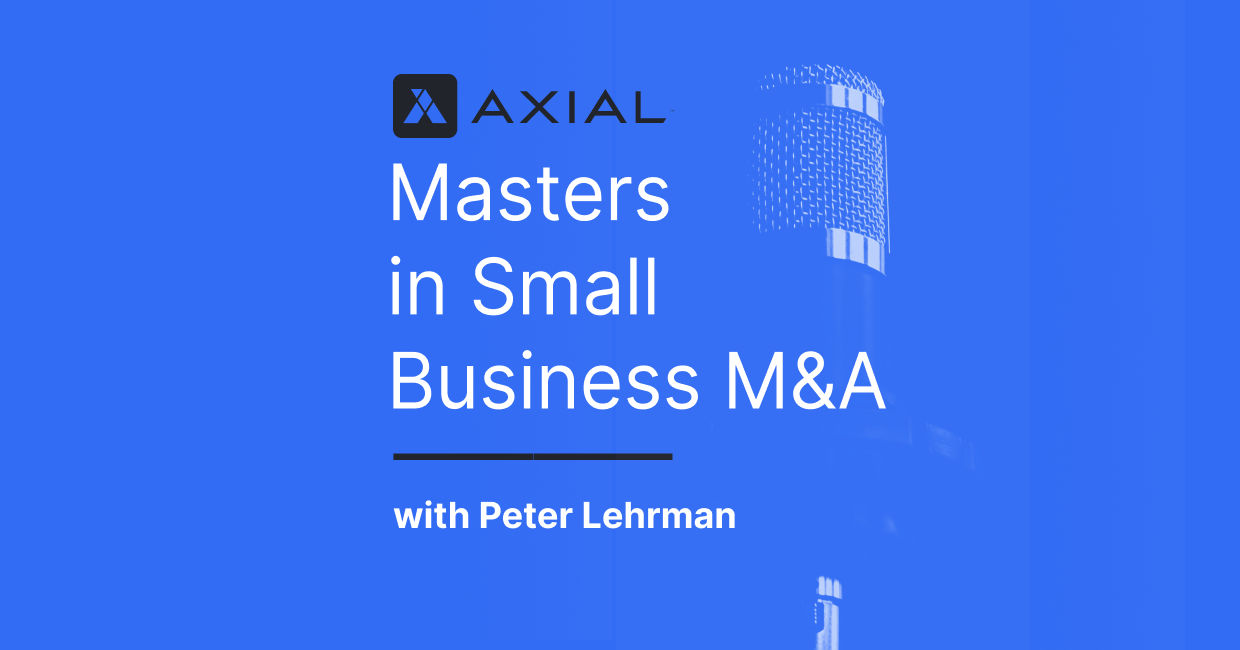
Building a Consequential Investment Bank with Adam Breslawsky
In this episode, Peter Lehrman sits down with Adam Breslawsky, founding partner and managing director of lower middle market investment…
When discussing deals with CEOs in the middle market, it’s likely advisors and investors will get a sense of general confidence from those looking to get a deal done in 2015. The dealmaking community has money to spend and is eager to identify the best investment opportunities in the middle market.
CEOs looking to tap debt or equity sources to fund growth or to conduct a competitive sale process are in a favorable position to market their companies. With two strong quarters of deals behind them, these mid-market companies have big goals through the end of the year and are generally optimistic about their growth prospects.
Here are six reasons why you can expect mid-market companies to continue to be bullish about their M&A prospects through the rest of 2015:
1. Companies are finding financing at higher rates of success.
In a banner year for dealmaking, mid-market companies are optimistic about their ability to fund growth. Mid-sized companies also have greater access to capital than they have in the past few years: the Dun & Bradstreet and Pepperdine Private Capital Access Index reported an 8.6% increase since 2012 in capital access for mid-sized businesses. Specifically, CEOs and owners feel that they have better ability to secure equity funding, with a 19% decrease in the number of businesses that say it is difficult to raise this type of capital.
2. CEOs expect profit increases in the near term.
According to the the latest Conference Board and PwC Measure of CEO Confidence, more than two-thirds of mid-market CEOs believe profits will increase, in large part due to market and demand growth as well as cost reductions. Similarly, CEOs felt that the economic conditions of their specific market sectors were positive. The report found that 49% of CEOs felt their individual industries improved in Q2, up from 35% in Q1.
3. CEOs are pursuing inorganic growth.
With strong corporate balance sheets bolstering their growth strategy, 54% of U.S. CEOs say they will complete an acquisition this year. Strategic alliances are also a key strategy, with 51% of CEOs saying they will enter such a partnership in 2015. It’s not just direct competitors that corporations are looking to acquire. With companies expanding product offerings, opening up across state lines and across borders and looking to harness the power of technologically-savvy upstarts in their general industry, there’s more than one reason to look at acquisition targets that can help them strengthen their positions in these new markets.
4. Hiring is a top priority.
Particularly among mid-market companies in the U.S., the hiring picture is looking better than ever. In Q2 2015, 64% of private companies are planning on hiring full-time employees within a 12-month period, the highest number since the recession. These companies plan to increase their headcount by 2.6 percent, up from 1.6 percent in Q1.
5. PE-backed companies are showing accelerated signs of growth.
Companies who seek out a private equity partner to accelerate growth achieve this growth faster than their non-PE backed counterparts. According to the National Center for the Middle Market this has been true of PE-backed businesses over the past several years: Private-equity backed businesses show a revenue growth rate of 9.2% compared to 6.5% amongst companies not owned by private equity.
6. CEOs aren’t satisfied with the status quo.
According to The 2015 Global CEO Outlook Study by KPMG, 56% of CEOs plan to implement company-wide processes for innovation within three years. More than a third of these CEOs felt that their business could stand to take more risks with their growth strategies. Further, 29% of CEOs expect to significantly transform their businesses by 2018. The results prove that CEOs understand the need to transform their business processes through innovation and aggressive growth in order to sustain competitiveness and profitability.
